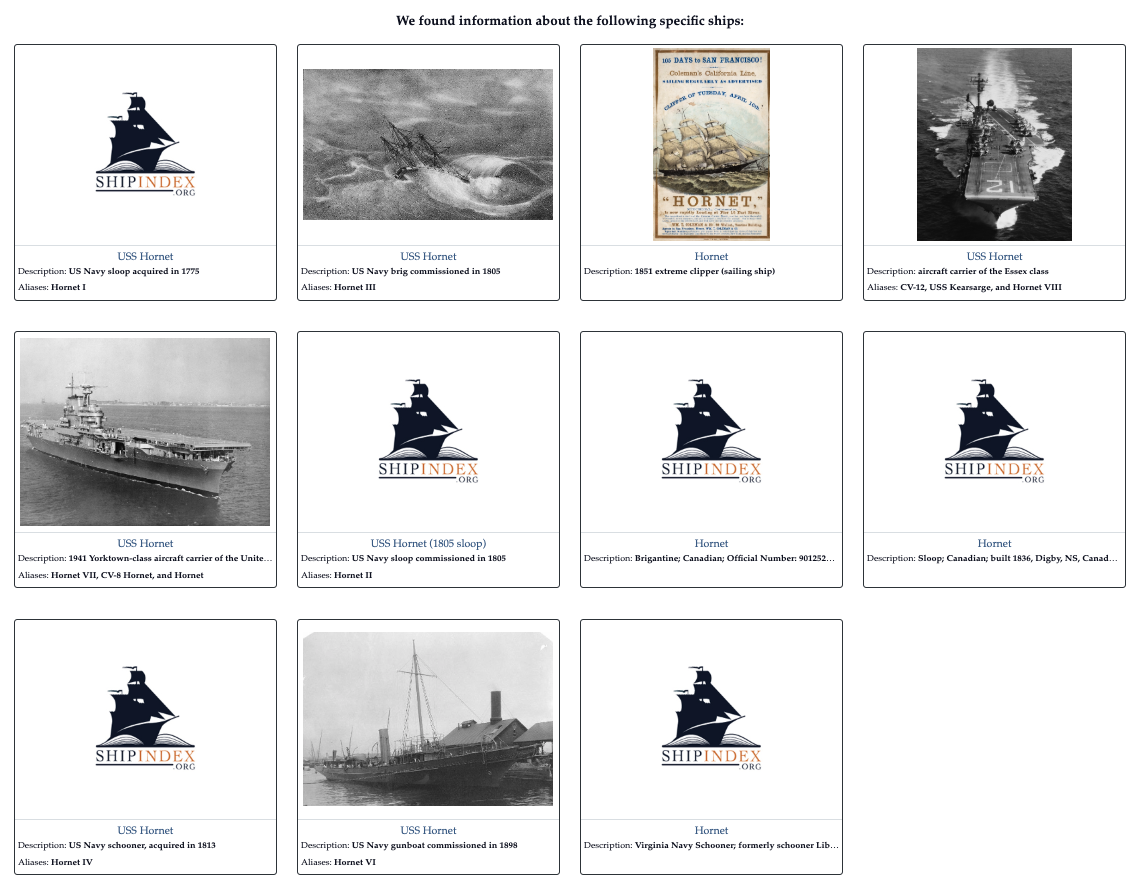I wrote a very long blog post about our new use of Wikidata identifiers, and how it changes the ShipIndex database. It might be too long for some. Here, I hope to limit my overview of these changes to just four paragraphs (not including this one).
The ShipIndex database has grown a lot over the past decade, and now has over 3.5 million citations in it. For very common ship names, this makes it too hard to find information about a specific ship. How do you find information about the right America, when there are 2,378 different citations to work through?
The solution is unique identifiers – basically a specific identifier for each hull. This also allows us to bring together citations for the same ship as it changes names. To make this work, we’re using identifiers from Wikidata, plus local identifiers when Wikidata doesn’t yet have one. Wikidata makes it easy to use Linked Data, so that we can uniquely identify and share items and concepts: the identifier Q82925, represented at https://www.wikidata.org/wiki/Q82925, specifically refers to the author Joseph Conrad, while Q1278752, at https://www.wikidata.org/wiki/Q1278752, specifically refers to the ship named after Conrad, now at Mystic Seaport Museum. It also refers to the original name of that ship, Georg Stage, but differentiates it from the current ship with that name. Similarly, the identifier Q838125 refers to USS Hornet (CV-8), and Q1141355 refers to USS Hornet (CV-12).
When you look at the ShipIndex page for Hornet now, you’ll see eleven different ‘cards’, each one referring to a specific hull, or vessel. Click on any of those ship names, and you’ll see only the citations that have been associated with that unique identifier. And note the URL for each card – it includes the Q-identifier, so others can easily link to it as well, without needing to create some new URL. In addition, many citations have not been associated with any card, because we cannot determine to which vessel the citation refers – at least, not without going back to the original source.

In the future, I hope to offer ways for individuals to help grow this resource, and maybe create a way that people can share their own information – images, reminiscences, comments, online links – about specific vessels. Until then, I’ll be working away at associating as many citations as possible to specific vessels. I hope that this improves your experience with ShipIndex, and helps everyone do more and better maritime history research.
For more information about what we’ve done here, check out the much-longer blog post.
